Is Himeji Worth Visiting? Our Day Trip From Osaka
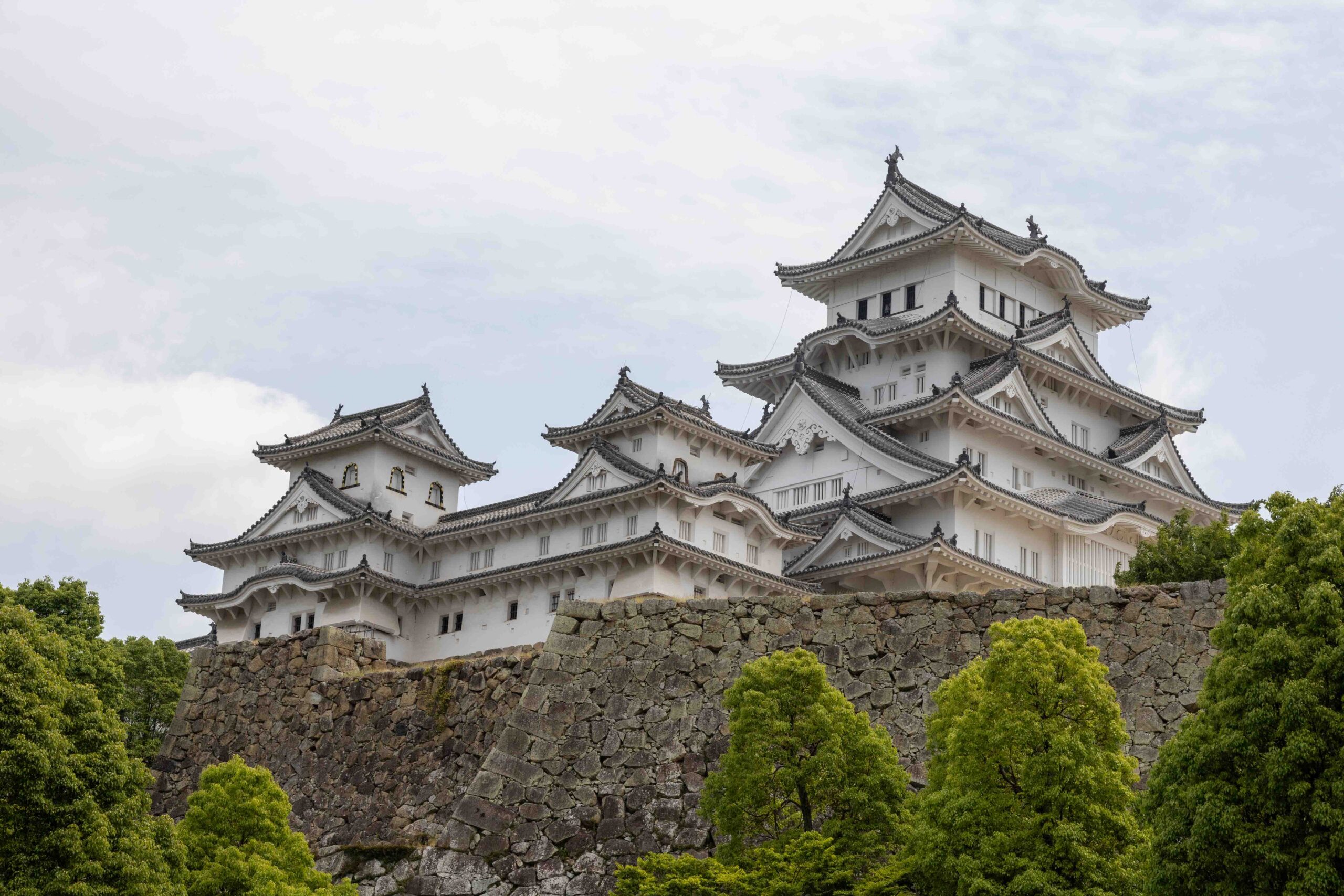
Last Updated on August 21, 2025 by Kay
This post may contain affiliate links, meaning I may earn a small commission on any purchases through those links at zero additional cost to you. Whatever I make goes to keeping this website running and I am forever grateful for the support. See my Privacy Policy for more information.
Located in Hyogo Prefecture, Himeji is a large city that’s home to Himeji Castle, one of the most famous landmarks and historical relics in Japan. But is it worth visiting when you’re traveling in Japan, especially if you’re not a castle buff?
I’ve been living in Japan for about fifteen years now, and my husband is a Japanese national who was born and raised in the country. We’ve been fortunate enough to visit Himeji twice, once a decade ago, and then again recently. We heard about how crowded Himeji Castle has become since Japan turned into a tourist hotspot over the last few years, so we wanted to see for ourselves if this was really the case.
Long story short, we absolutely love visiting Himeji Castle, and in this article, we’ll share why it’s the perfect destination for a day trip from Osaka or even Kyoto.
Table of Contents
Why Visit Himeji Castle?
If you’re wondering why you should visit Himeji Castle, here are a few reasons:
- It’s a UNESCO World Heritage Site (the first in Japan, in fact)
- Himeji Castle miraculously survived fire bombings in World War II, making it one of the oldest surviving castles in Japan
- It’s the only completely white castle in Japan
Day Trip to Himeji Castle From Osaka
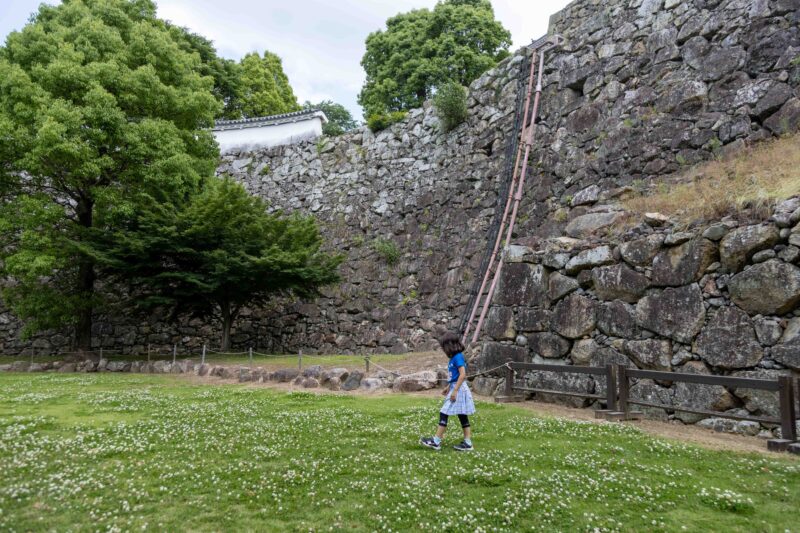
Himeji Castle, also known as the “White Heron Castle,” is quite easy to visit from Osaka and very affordable. It takes a little over an hour to reach Himeji Station from Osaka Station, and you only have to take one train that runs along the Tokaido Sanyo Line. This costs 1460 yen one-way.
From Himeji Station, you can either walk to Himeji Castle, which takes 20 minutes, take a taxi, or take the Himeji Loop bus. Taxis cost about 800 to 1000 yen one-way. The bus costs only 100 yen, but it only runs every 30 minutes on weekdays and around 15 minutes on weekends from 10 AM to 2 PM.
We arrived at Himeji Castle a little before 10 AM on a weekend. I was a little worried about it being busy, but surprisingly, since this was after cherry blossom season (and peak tourist season), there weren’t as many people as I had been expecting.
Now, don’t get me wrong, there were plenty of people, but it’s nothing compared to popular tourist destinations in cities like Kyoto and Osaka.
While we were walking to the castle, my daughter spotted a Himeji Castle boat tour and wanted to do that. She never asks to do much, so we obliged since the tour would be leaving soon. This 30-minute tour costs 1500 yen for adults and 500 yen for kids.
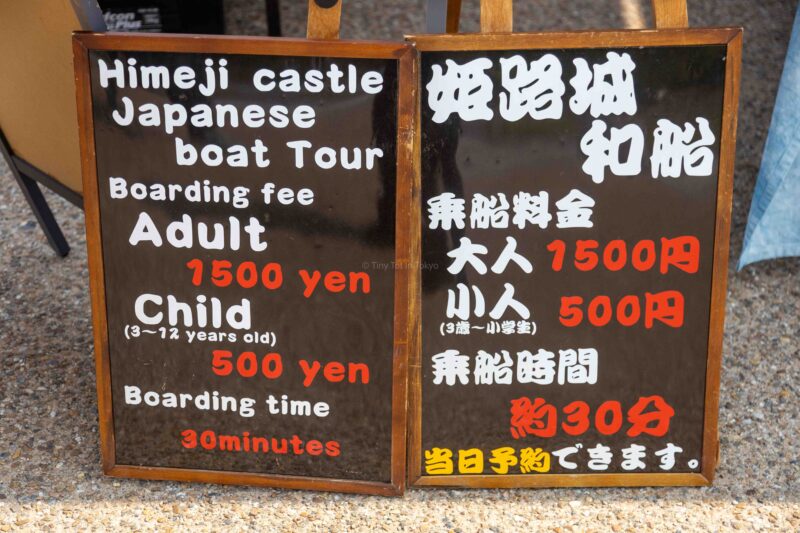

There are two routes to choose from — Harima (はりま) and Shirasagi (しらさぎ). We chose the Shirasagi tour since it was departing 20 minutes before the Harima tour.
This was a really great tour where we got to know insider information about Himeji Castle, such as how the castle managed to survive the fire bombings in World War II (it wasn’t just because the castle was concealed), and the history of its structure.
However! This tour is only in Japanese. For these reasons, I can only recommend it if you can speak Japanese and/or you want to take a leisurely boat ride around the moat. You will also get the opportunity to take a unique photo of Himeji Castle as well, one that not many travelers have, and take a quick look at a retro attraction in Himeji Zoo.
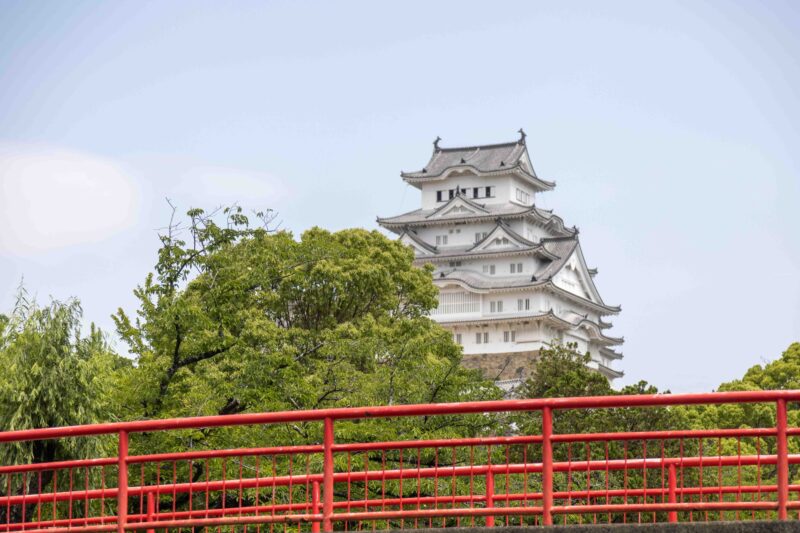
After the boat ride, we headed inside the Himeji Castle grounds by crossing the Sakuramon Bashi bridge and entering the Sakura Gate (Sakuramon).
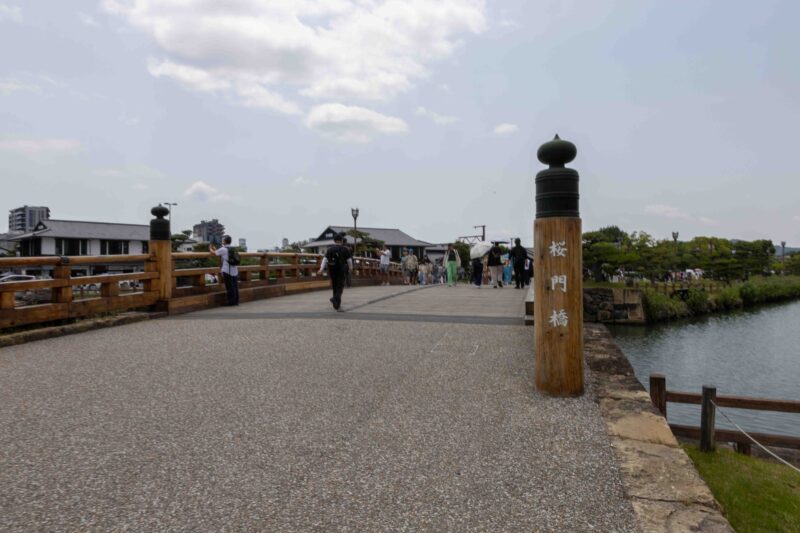
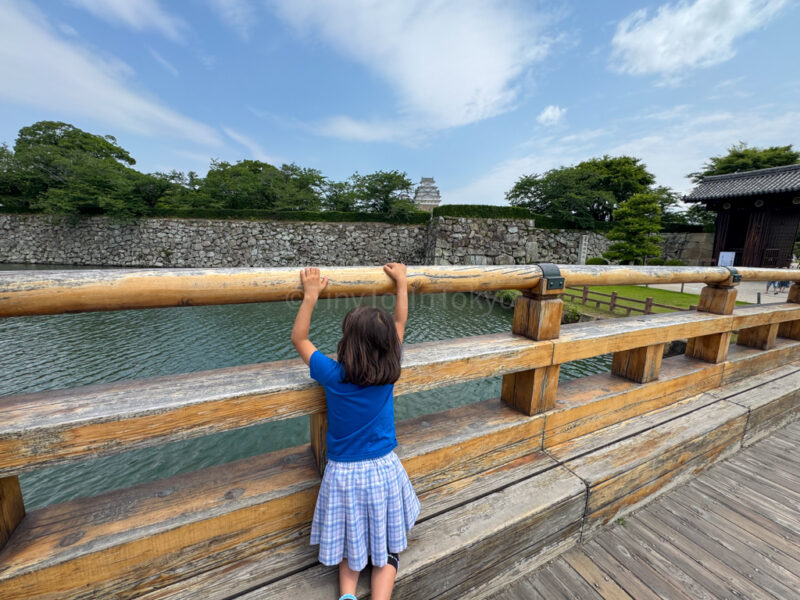
First, you’ll enter San-no-maru Hiroba, a grassy area right in front of Himeji Castle. The first thing you’ll see is Himeji Castle in the distance.
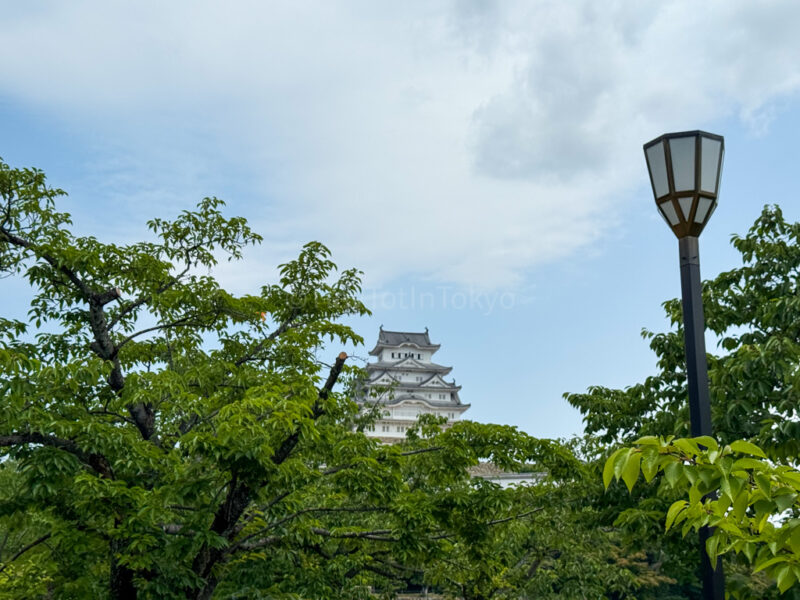
My husband isn’t impressed by much (he’s the type who would rather stay home than travel to “touristy” destinations in Japan), but despite this being his second visit, he remarked in Japanese, “Himeji really is the most beautiful castle in Japan!” and said he was glad we visited — and we hadn’t even gone inside the castle grounds or the castle itself at this point!
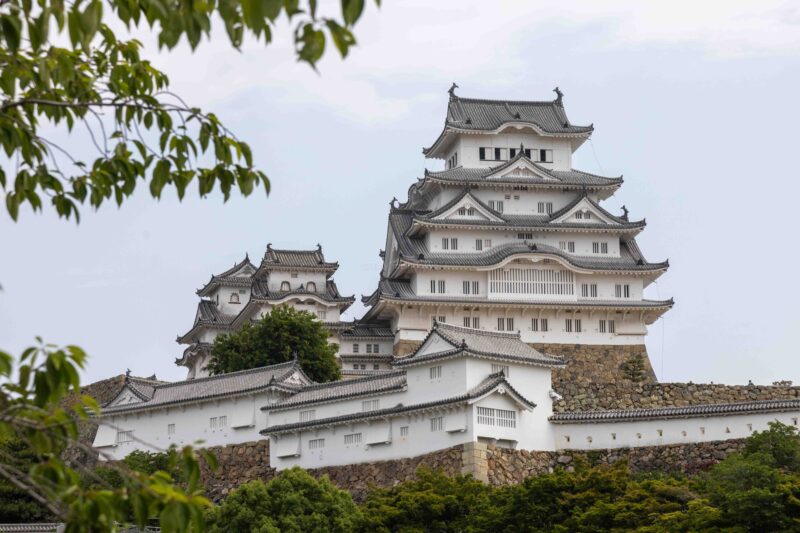
San-no-maru Square is lined with cherry blossom trees, making it a popular spot for cherry blossom viewing, especially with locals from Himeji. We made a mental note to try to visit again in spring.
The Himeji Castle grounds are a short walk away from the square. The fastest way to get there is by turning left after you go through the Sakura Gate.
You need a ticket to get inside the Himeji Castle grounds. There are several multilingual ticket machines where you can buy tickets using cash, a credit card, or a digital payment such as Apple Pay (QUICPay).
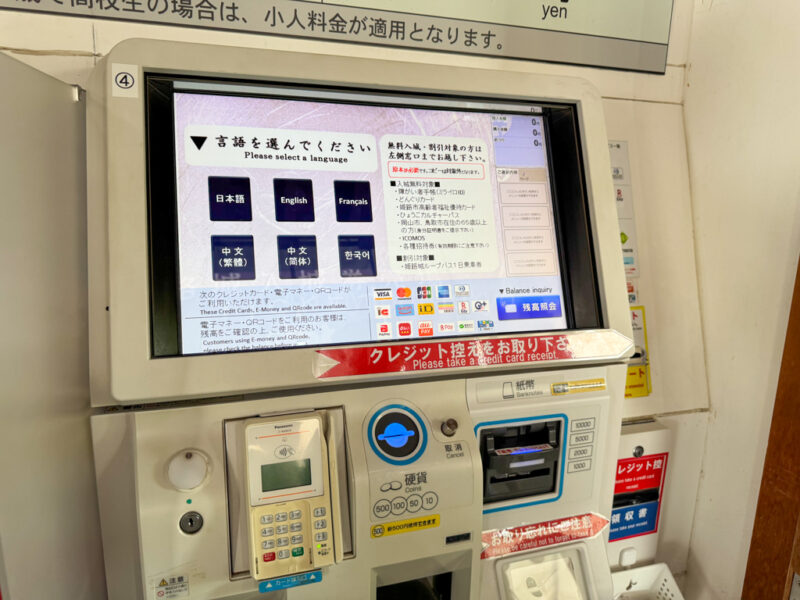
You can also purchase tickets in advance, which is something we wish we did! However, we didn’t have to wait long to buy our tickets because it wasn’t a popular season to visit Himeji Castle.
After we bought our tickets and entered the castle grounds, we headed straight to the Main Keep.
Here’s a map of the Himeji Castle grounds:
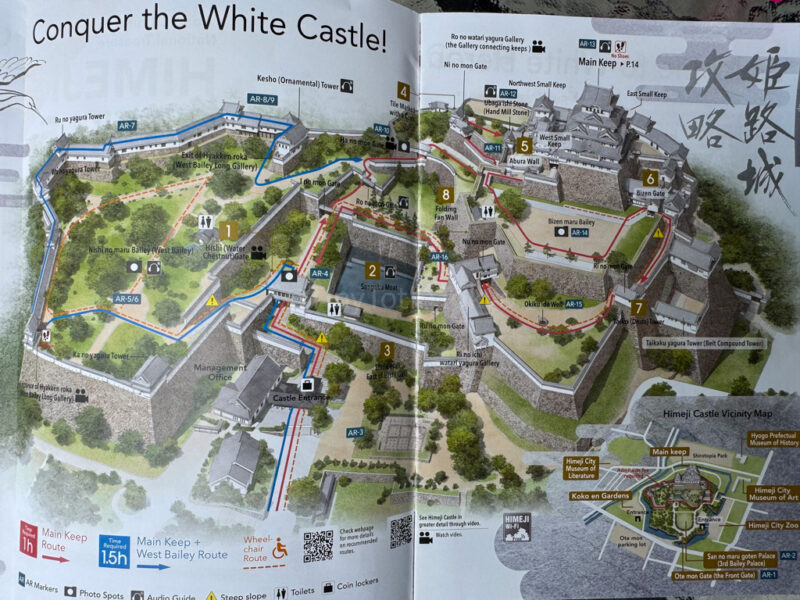
The Main Keep is, as the name implies, the main part of Himeji Castle that you see in photos. There were lots of small windows, called loopholes, along the way from which the castle guards shot at enemies. What I found interesting were the different shapes of these windows, some triangular, circular and square for gunners, and rectangular ones for archers.
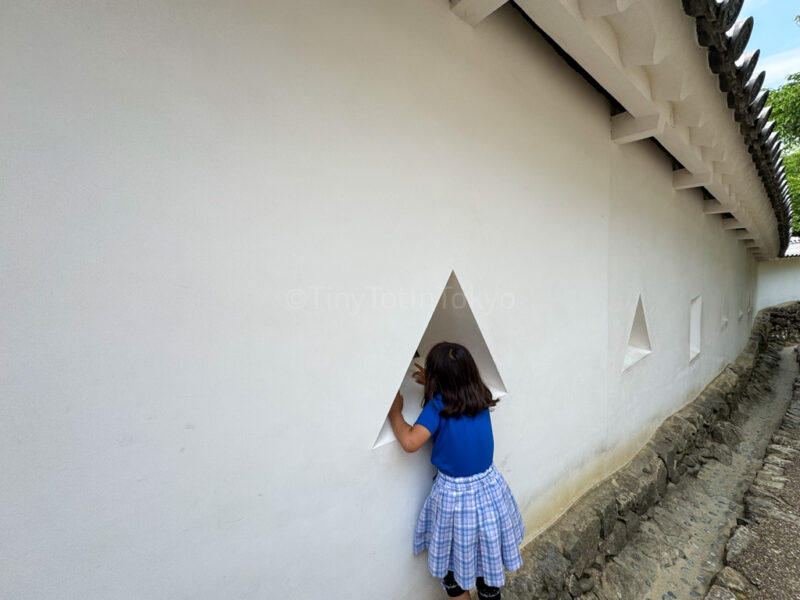
When we reached the Main Keep, we had to take off our shoes and place them in the provided plastic bags before going inside. We needed to carry these shoes with us while inside the Main Keep. For this reason, I suggest wearing shoes that are easy to take on and off. Do not wear boots because they might not fit in the bag.
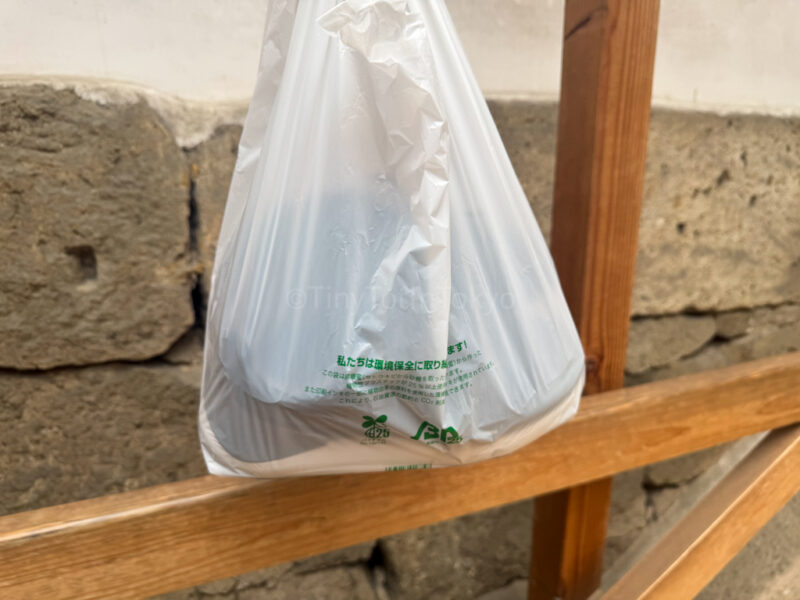
Since Himeji Castle was spared during World War II, it’s one of the few castles in Japan that has maintained its original structure. Of course, it’s had some maintenance over the years, but once inside, you truly feel like you’re taking a step back into time.
I mean, look at these stone and clay walls!
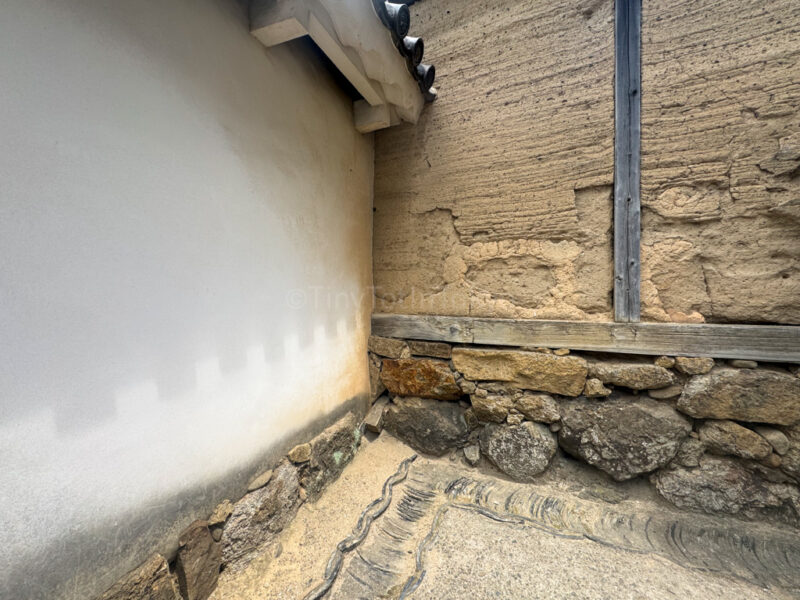
The Main Keep consists of six floors. There isn’t much on each floor, but I don’t mind this because it makes the castle look less gaudy, like a tourist trap, and beautifully retains its history. There is an AR app that you can download, which is supposed to show scenes from Himeji Castle’s past, but unfortunately, this didn’t work for us. However, we didn’t mind.
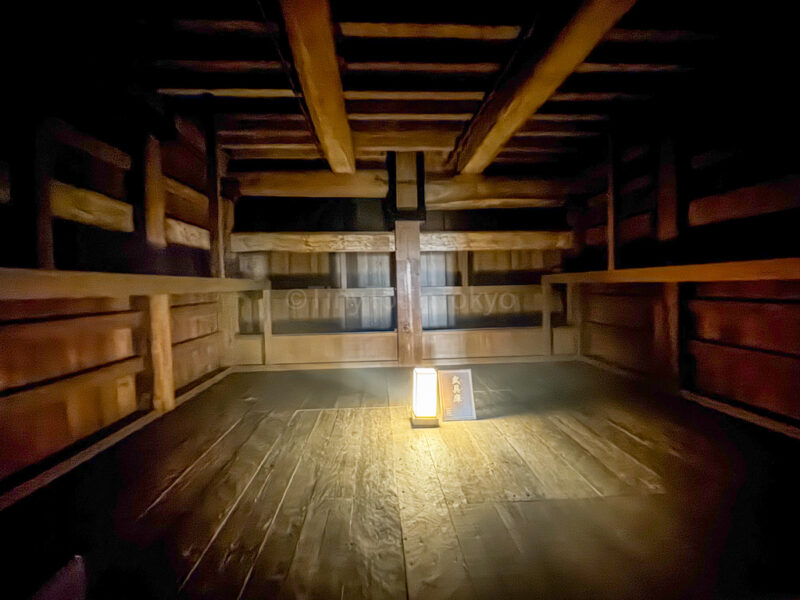
There is no elevator in Himeji Castle, and the stairs leading up and down each floor are quite steep and somewhat slippery. You also have to bend down at some points when you’re climbing the stairs, so you don’t bump your head. For these reasons, I do not recommend that anyone with mobility difficulties visit the Main Keep of Himeji Castle.
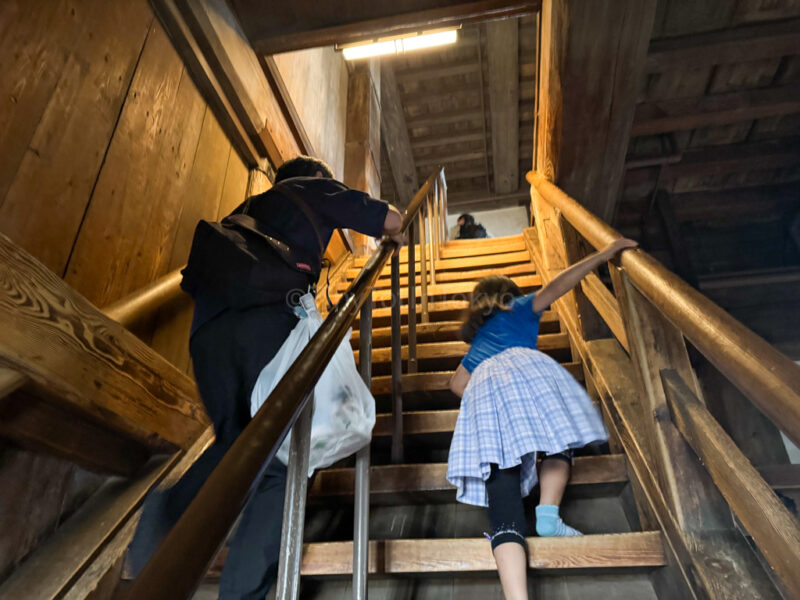
Although you can look out the windows on each floor to see the scenery below, the best view is undoubtedly from the top of the castle on the sixth floor. This was absolutely stunning!
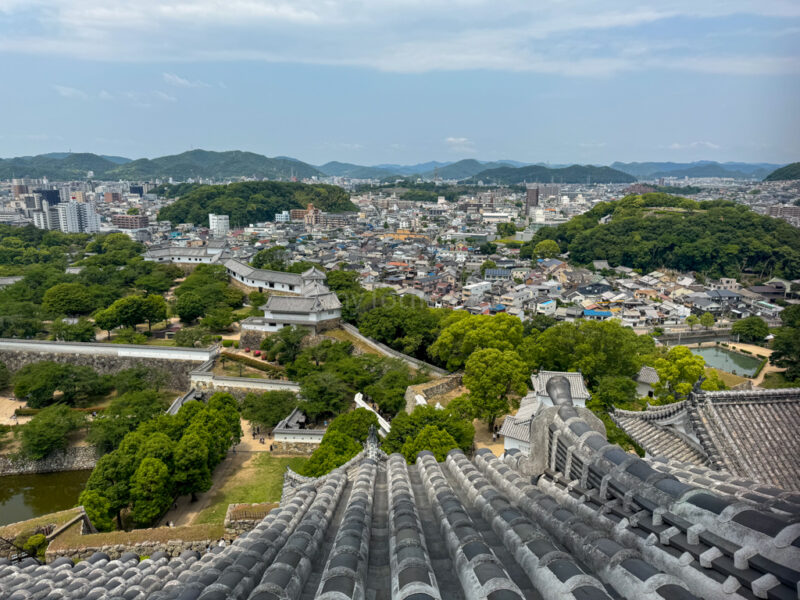
There’s also a small shrine here called Osakabe Shrine. Originally, Himeji Castle was built where a Shinto Shrine was located. Lord Himeji thought that he had cursed his family by removing the shrine, so he had it rebuilt within the castle grounds. Osakabe Shrine was moved to the top of the keep after World War II.

Unfortunately, we weren’t able to leisurely spend time on the top floor because it was so crowded!
When it came time to descend, there was a line of people waiting since there was only one exit. (I wonder what would happen in the event of a fire?) This line moved quickly, though, and we waited only three minutes to reach the stairs headed down to the fifth floor.
On your way down, I recommend checking out the weapons rack on the second floor (turn left once you reach the bottom of the stairs).
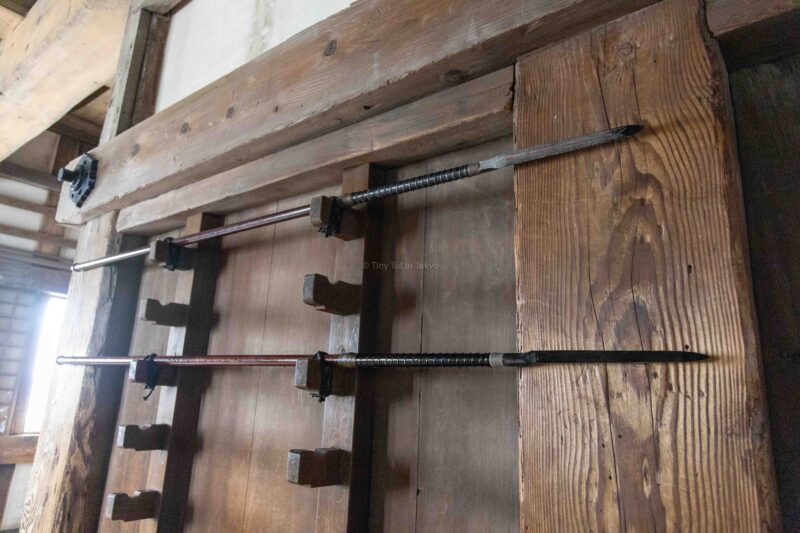
Make sure to also watch the video in the room that used to store weapons (on the right). This video is only five minutes long but has subtitles and provides interesting information about Himeji Castle’s structure.
Just before the exit, there are some displays of the original roof tiles that composed Himeji Castle.
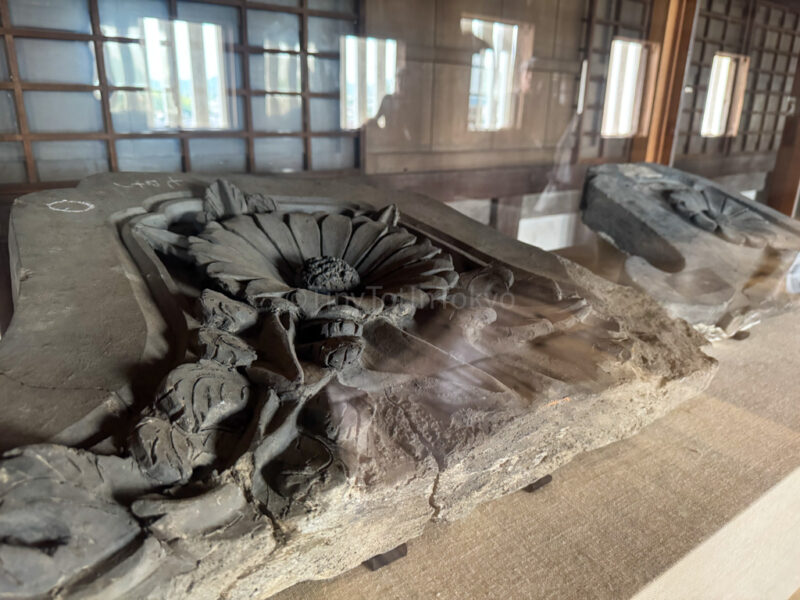
At the exit, we put our shoes back on and headed outside. The open space at the Bizen Maru Bailey was a great spot for taking photos with the Main Keep of Himeji Castle in the background. When we were done, we passed through Bizen Gate and then Ri no Mon Gate until we reached Okiku Ido Well.
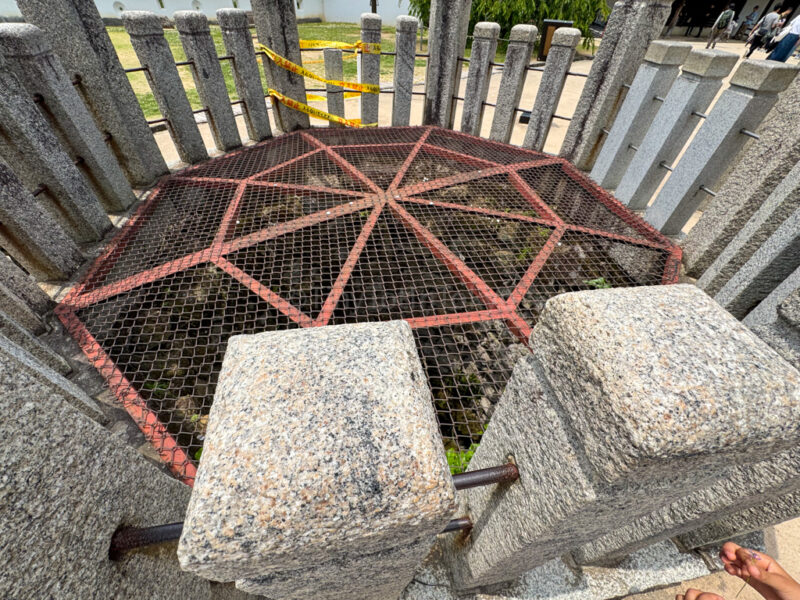
Okiku Ido is a famous well because it is thought to be haunted by a woman named Okiku who was framed for theft by a man named Danshiro and then murdered and thrown into the well. Danshiro stole one of ten plates, so it’s believed that you can still hear the ghost of Okiko counting the remaining nine plates. (In fact, when we went to the well, a young Japanese girl a little older than my daughter was pretending to be Okiku and counting the plates in a creepy voice.)
Now, when you go to the well, you’ll probably see a lot of coins thrown inside. Whether or not you want to toss a coin in is up to you, but my Japanese husband sternly told me not to do that because it was disrespectful to the spirit of the person who was thrown into the well, who is not at peace. And notably, I didn’t see any Japanese people throwing money inside.
In total, we spent a little over an hour exploring Himeji Castle’s Main Keep.
Next, we went to Nishi no Maru, or the West Bailey. I didn’t have many expectations for it, but I ended up liking it quite a bit!
The West Bailey was where Prince Tadatoki and his wife, Princess Sen, used to reside. It has stairs like the Main Keep, but there aren’t nearly as many. There are also more displays of castle relics here, as well as rooms that used to be quarters for staff.
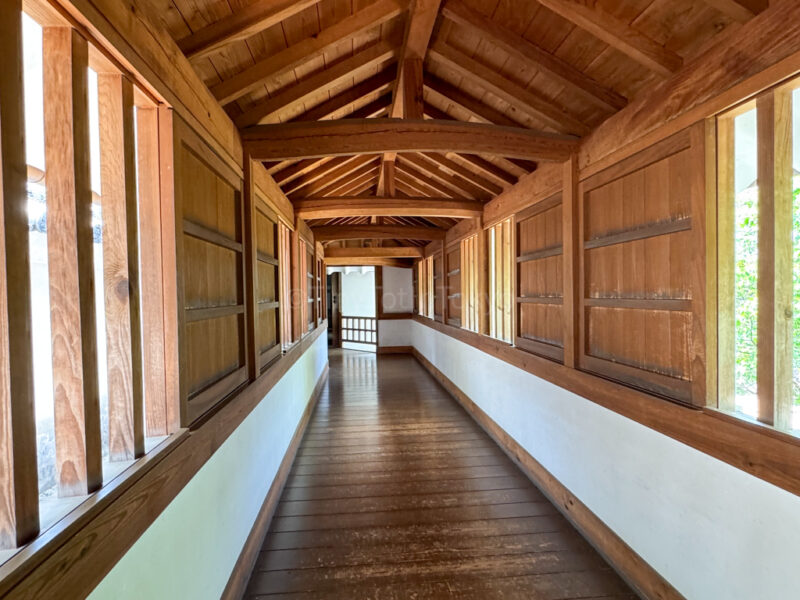
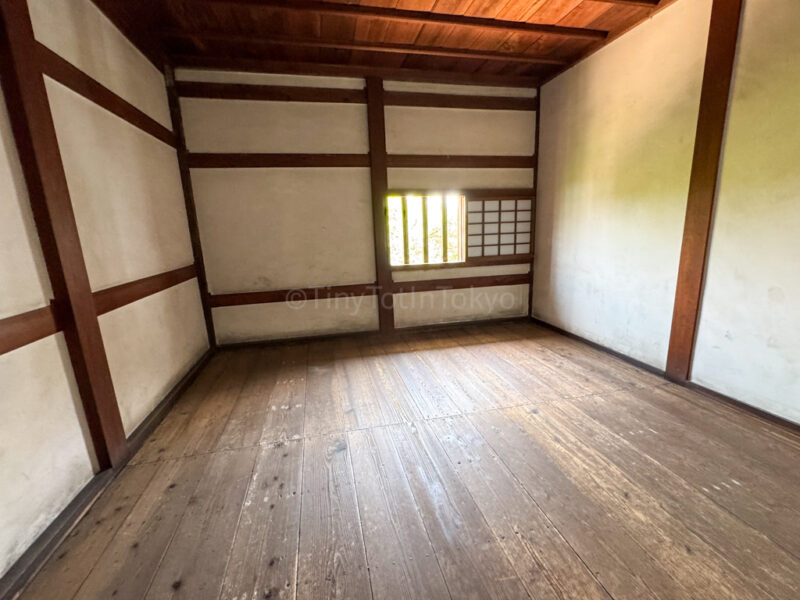

One room also offers a lovely and picture-perfect view of Himeji Castle’s Main Keep:
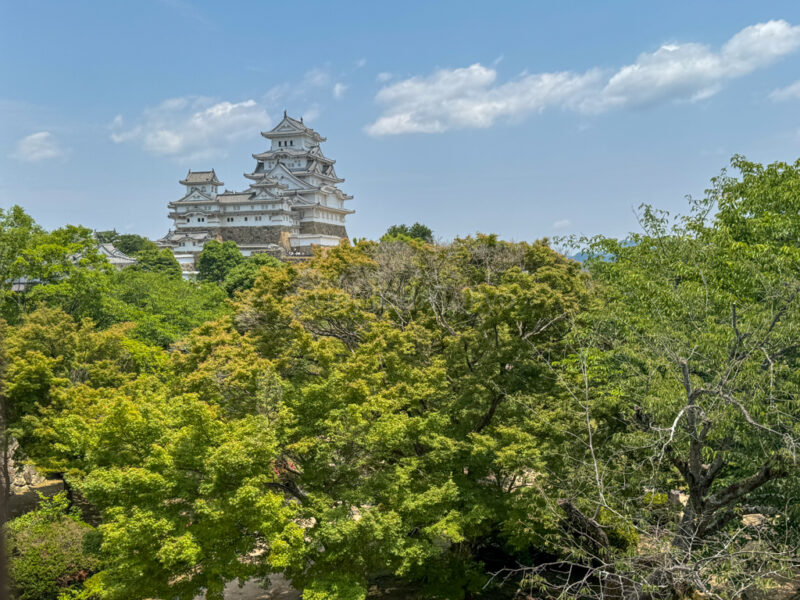
It took us about twenty minutes in total to visit the West Bailey.
Is Himeji Castle Worth Visiting?
Filled with history, Himeji Castle is an incredibly beautiful and impressive place in Japan. Although this was my second time visiting with my husband, we were still just as amazed as the first time we visited.
If you’re okay with climbing numerous stairs and appreciate history, you will love Himeji Castle, and I believe it’s absolutely worth visiting. And to make the most of your visit, you need to go to Kokoen Garden.
Is Kokoen Garden Worth Visiting?
Having explored the Himeji Castle grounds, we went to Kokoen Garden, which was about a seven-minute walk away. We had been hoping to participate in a tea ceremony at the garden, especially since my daughter was learning it at her school, but on this particular day, only 4000 yen tickets were available. I believe this was because of an event.
Kokoen Garden is one of the most stunning I have ever been to in Japan, and I say this as someone who has lived here for over a decade and been to my fair share of Japanese gardens.
When we entered, we were greeted with immense greenery. Notably, there were lots of Japanese maple trees, which made me think that it must be especially lovely in autumn.
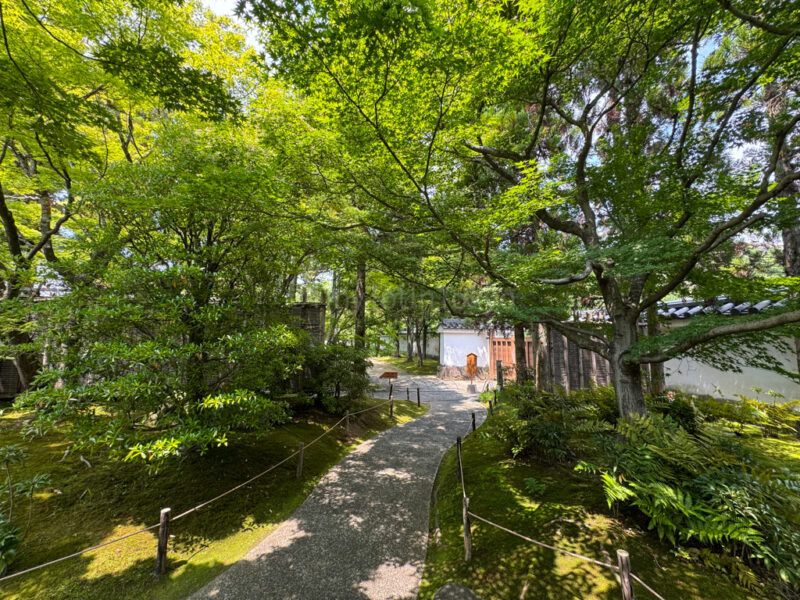
The garden has a famous restaurant inside called Restaurant Kassui-en.
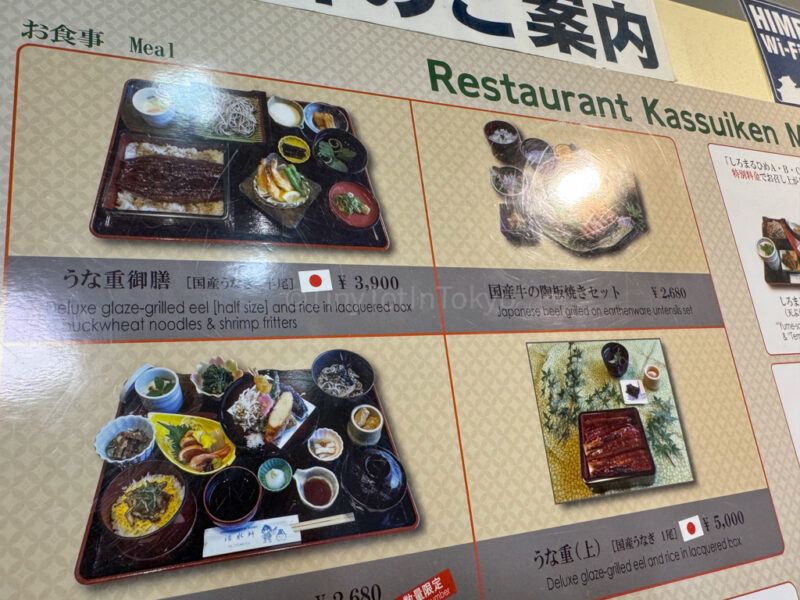
Their Japanese ranges include soba, grilled eel, and grilled Japanese beef. They have a set for kids as well. It all looked very mouthwatering, but although it was 1:00 PM, and the restaurant wouldn’t open for another 30 minutes, there were already 19 groups waiting to get in, making the wait time more than 90 minutes!
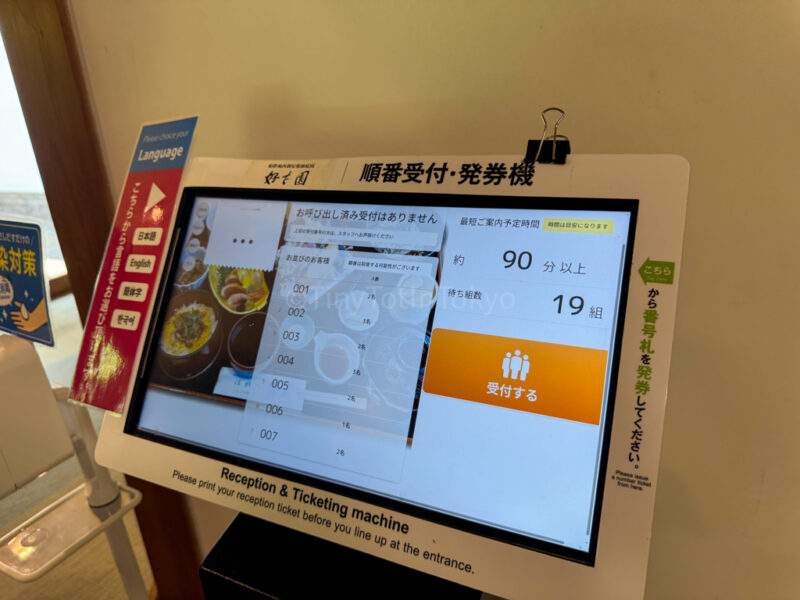
So we gave up, but that was fine because we still had the rest of the garden to explore.
Kokoen Garden consists of nine different gardens, starting with the Cho-on sai guest house and roofed corridor.
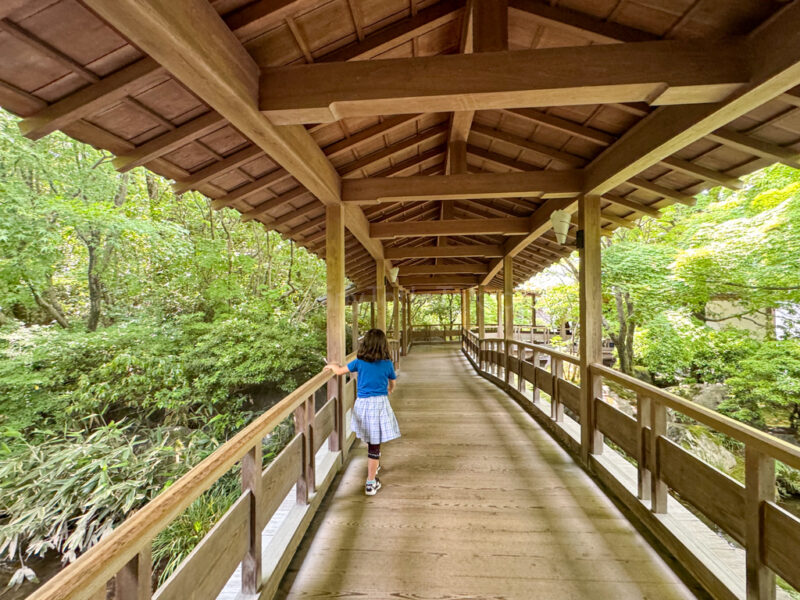
The small waterfall surrounded by lush green trees was so peaceful to listen to, and I wanted to stay here as long as I could! On the other side is a small lake with a tiny waterfall in the corner. As you go further up, we spotted lots of colorful carp fish, which delighted my daughter.
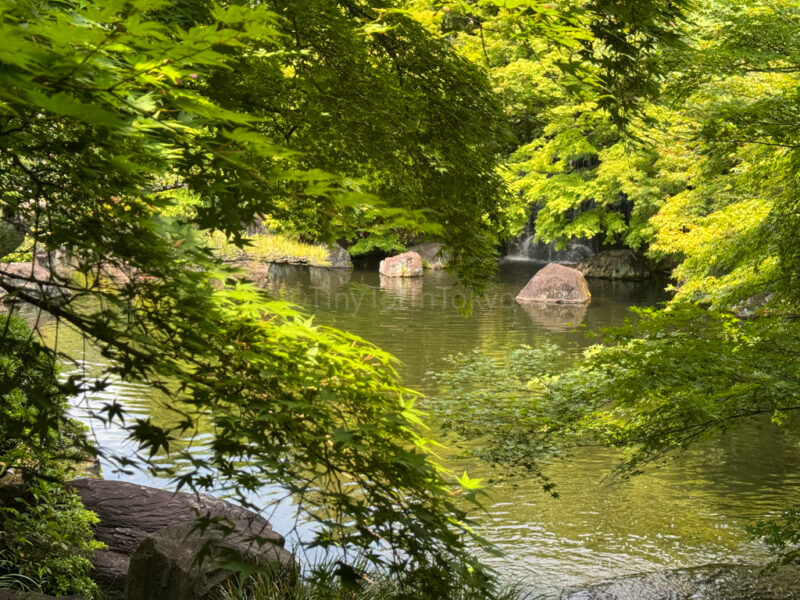
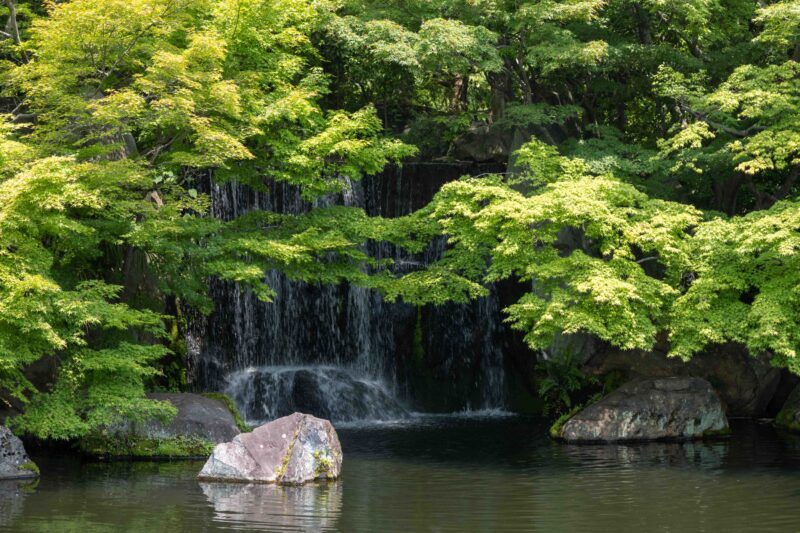
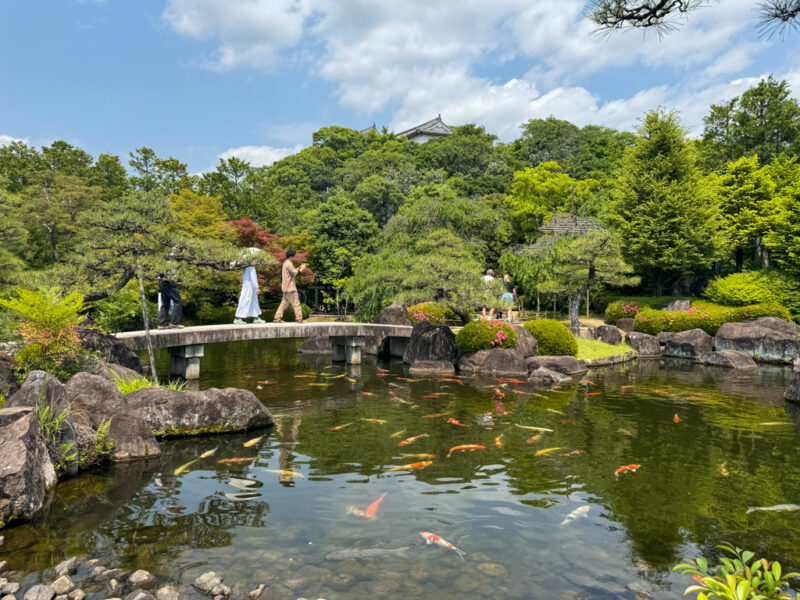
There are lots of beautiful places to take photos in Kokoen Garden and appreciate the nature in Japan by season.
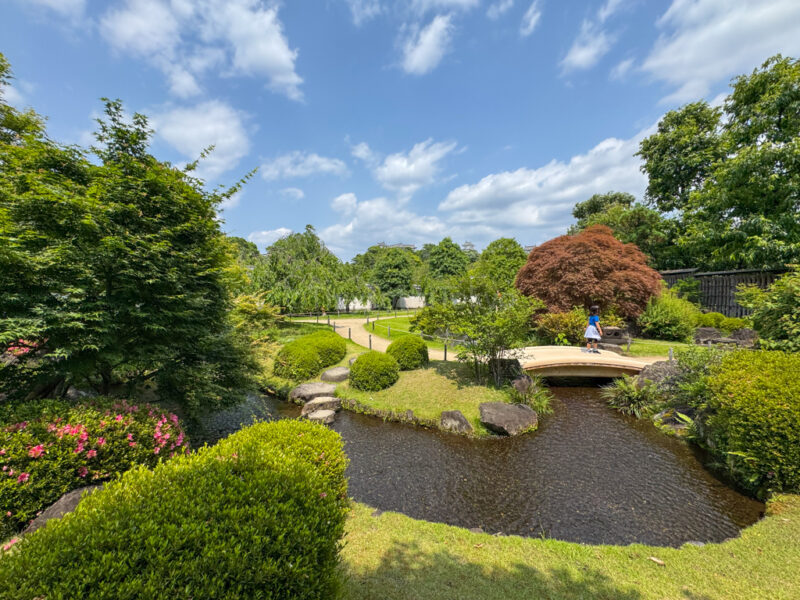
All the areas in Kokoen Garden should absolutely be visited, but our favorite was the garden of bamboo and the garden with a hill and a pond. Here you can explore a stunning bamboo forest or sit in a small house above a pond while looking at fish below.
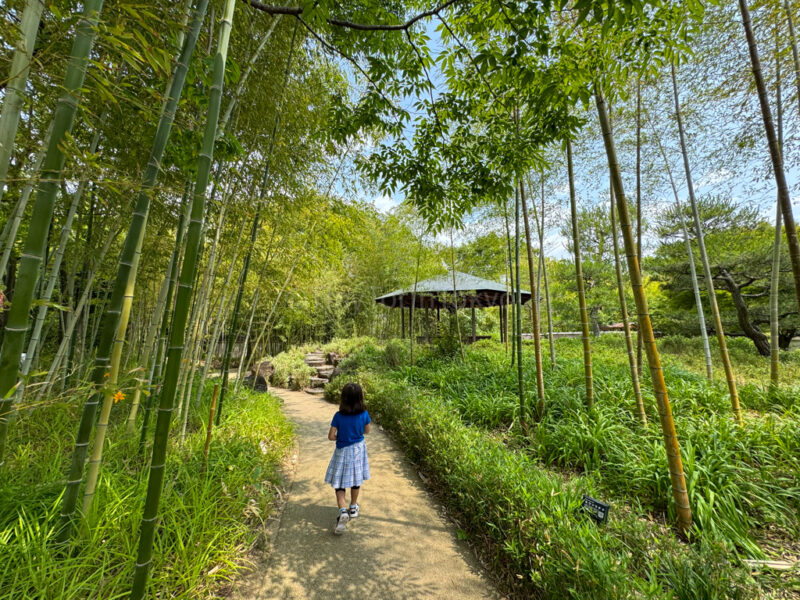
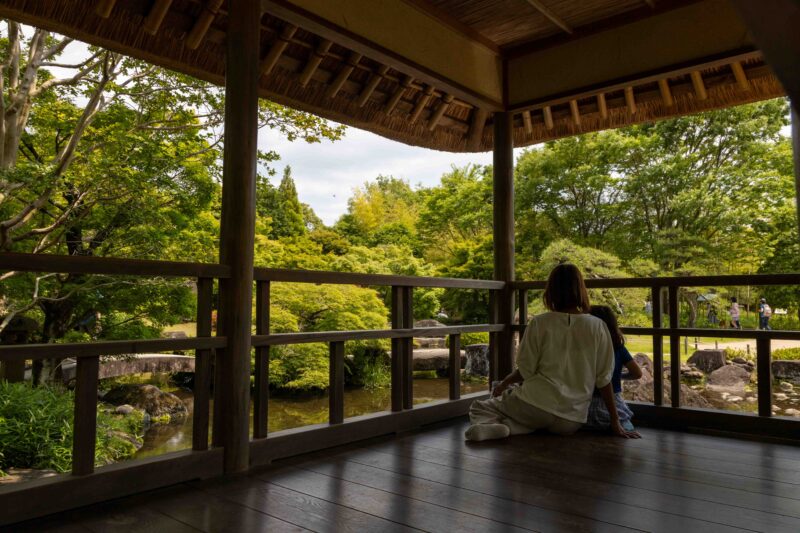
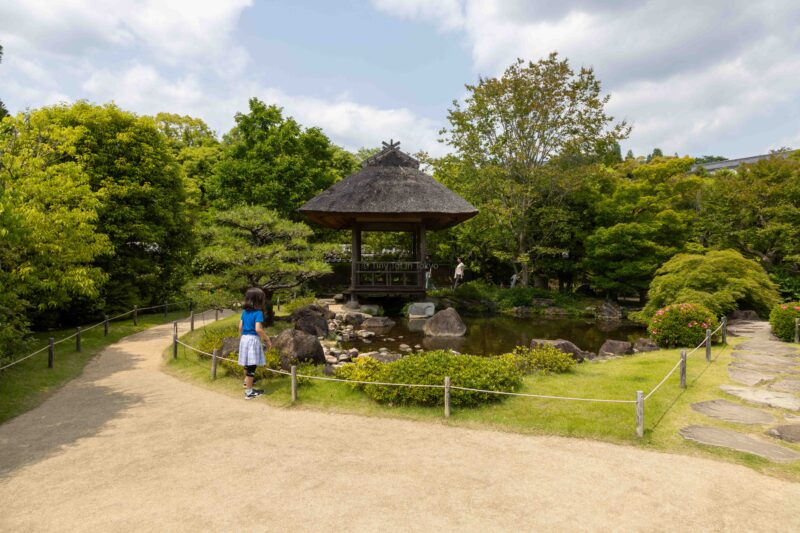
In total, we spent one hour at Kokoen Garden, and it was worth every minute. So, to answer the question, “Is Kokoen Garden worth visiting?”, my answer is a resounding yes! Even my husband enjoyed it, and that’s saying a lot since he usually doesn’t care for gardens.
FAQ
Here are some frequently asked questions about traveling to Himeji Castle.
How to get to Himeji from Osaka?
Take the Tokaido-Sanyo line from Osaka Station to Himeji Station.
How long does it take to get to Himeji from Osaka?
It takes about an hour to reach Himeji from Osaka.
How to get to Himeji from Kyoto?
Take the Tokaido-Sanyo line from Kyoto Station to Himeji Station.
How long does it take to get to Himeji from Kyoto?
It takes 1.5 hours to get to Himeji from Kyoto.
What are the hours for Himeji Castle?
Himeji Castle is open daily from 9 AM to 5 PM.
How long should I expect to spend at Himeji Castle?
If you want to visit both Himeji Castle and Kokoen Garden, expect to spend at least half a day there.
Can I do a day trip to Himeji and Kobe?
Yes, it is possible to do a day trip to both Himeji and Kobe. I suggest first visiting Himeji in the morning, since the castle closes at 5 PM, and then spending the afternoon and possibly evening in Kobe.
When is the best season to visit Himeji Castle?
The best season to visit Himeji Castle is in spring during cherry blossom season (late March to early April) and autumn (mid-November). The castle surrounded by cherry blossom trees is absolutely dreamlike, and Kokoen Garden’s autumn foliage is stunning.
However, keep in mind that many other tourists will be visiting Himeji Castle during these times, so expect it to be very crowded.
When is the least crowded time to visit Himeji Castle?
The least busy time to visit Himeji Castle is December, January, May, and June.
How much does it cost to enter Himeji Castle?
It costs 1050 yen for adults to enter Himeji Castle.
How much does it cost to enter Kokoen Garden?
Kokoen Garden costs 310 yen to enter. For the best value, I suggest purchasing a special combo ticket that’ll allow you to enter both Himeji Castle and Kokoen Garden for 1050 yen.
Should I purchase a ticket for Himeji Castle in advance?
Yes, if possible, you should purchase a ticket for Himeji Castle ahead of time. You can do so from the official Himeji Castle website. This will save you time, so you don’t have to wait in line to purchase tickets once you’re at the castle. This is something we wish we knew about ahead of time.
Are there tours for Himeji Castle?
Yes, there are official tours in English by experienced Japanese guides. These tours are twice a day and cost an additional 1000 yen per person.

